 |
"'Higala' means 'friend', so 'cucina higala' means 'a friend's kitchen'...", said Carlston Maglangit of the Department of Tourism (DOT)-Northern Mindanao when I asked him, as soon as we stepped out of the van for our dinner, what the unfamiliar word in the restaurant's name means. The Visayan word for friend. Cucina Higala matches the city where it stands: Cagayan de Oro, the City of Golden Friendship.
It was our first dinner together, our group that consisted travel operators, online influencers, vloggers, and fellow travel bloggers that the Tourism Promotions Board Philippines put together for their Tourism Influencer's Program aimed at promoting the reopening of local destinations in order to revive the industry knocked off by the ongoing pandemic.
We were to go around Bukidnon. Our first night, the dinner, was sort of a kick-off of the four-day trip. The DOT regional office, with its director Ms. May Unchuan and Cucina Higala's owner Mr. Jan Uy, hosted us for a night of sumptuous Mindanao feast and valuable learnings about the region's food culture.
Cucina Higala is an award-winning restaurant, consistently topping the list of CDO's best. This specialty restaurant serves a take on Mindanao's heritage cuisine and here's a rundown of the heirloom dishes for that evening.
Chicken Surol
Chicken surol is a ginataang manok (chicken in coconut milk) dish that originated from Camiguin. It is likened to tinola, by way it is cooked, only surol is cooked in coconut milk-based broth, not in water or chicken stock.
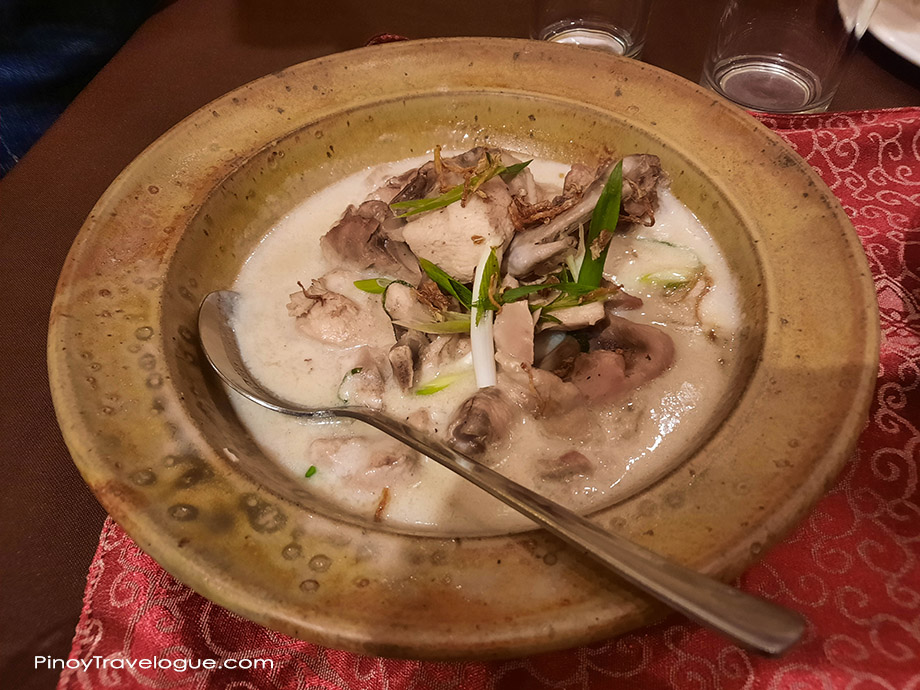 |
| Chicken surol |
The dish uses kalabo, the local term for Mexican oregano, and adds a subtle mint flavor to the creamy dish. But when kalabo is difficult to acquire, other herbs like lemongrass, sage or other types of oregano are used as an alternative. Surol may also come in pork, beef and seafood.
Beef Randang
Cucina's best seller, beef randang, is a spicy meat stew from Marawi, though it is also a popular dish among other Southeast Asian countries especially Indonesia where it is a traditional food (called rendang) served in ceremonial occasions.
What makes Mindanao's version different is the use of indigenous ingredients. Carabeef is a popular choice for this dish, but in Cucina Higala, cuts of beef brisket from their local wagyu cattle are sautéed in native spices, slow-cooked in gata (coconut milk) and sprinkled with charred coconut.
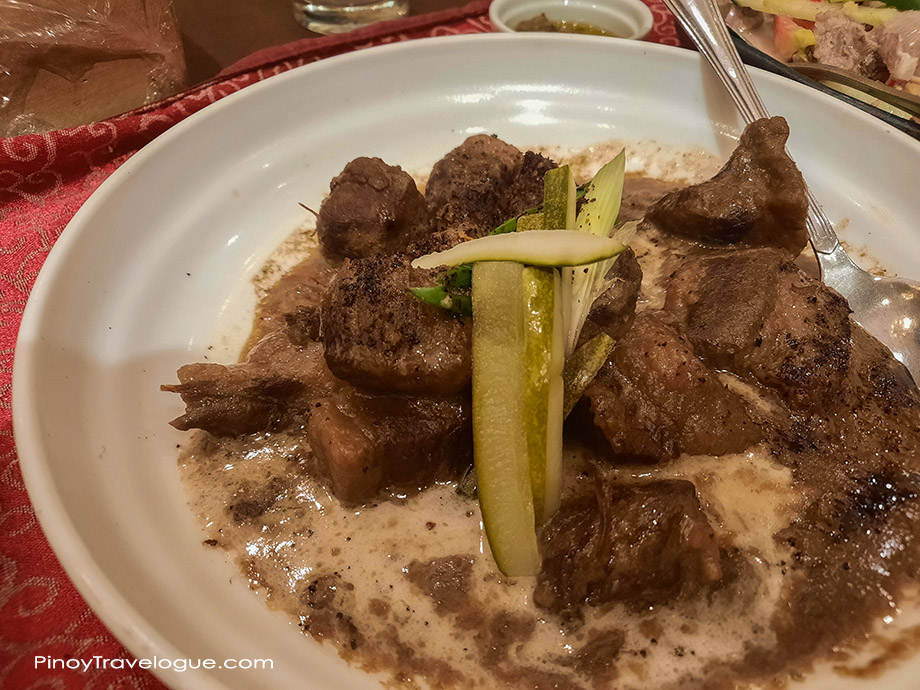 |
| Beef randang |
Palapa
Cucina Higala's beef randang is served with a ramekin of palapa, a spicy condiment popular across Mindanao. It is chiefly a mixture of finely chopped sakurab (native scallions), ginger and siling labuyo; an all-around appetizer that can be eaten raw or used in cooking. It originated from the Maranaos of Lanao del Sur and can be found in most of Maranao household. In terms of purpose, it can be likened to atsara.
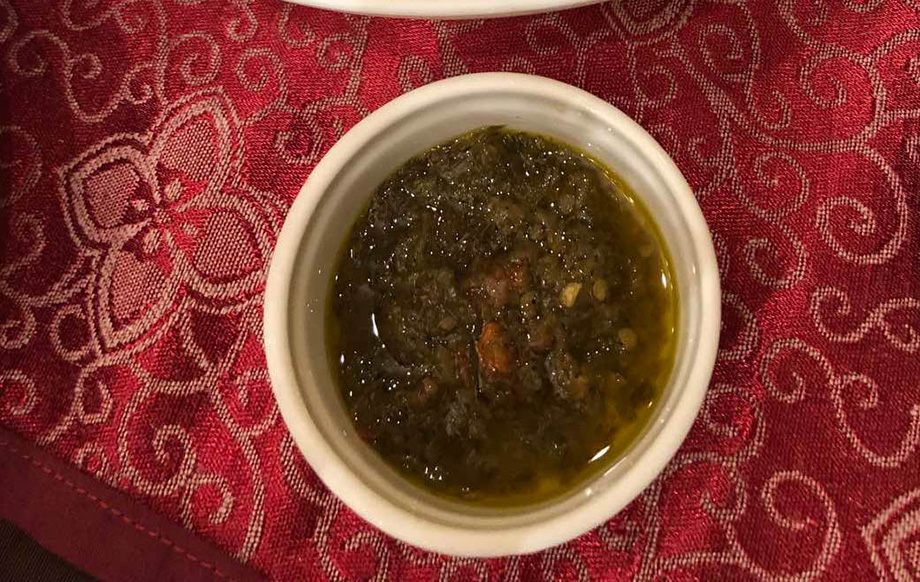 |
| Palapa | via Carl Maglangit |
Palapa adds a little more spice to beef randang so it becomes more appetizing. Extra rice, please!
Sinuglaw
With sinuglaw I remembered Cebu's sutokil, the one we had in Camotes Island years back. But while sutokil—short for sugba (grilled meat or fish), towa (fish soup) and kilawin (raw fish cooked in vinegar, also called kinilaw or Filipino ceviche)—are three separate dishes singly served as combo, Cagayan de Oro's sinuglaw is a fusion of sugba and kilawin into a single plate.
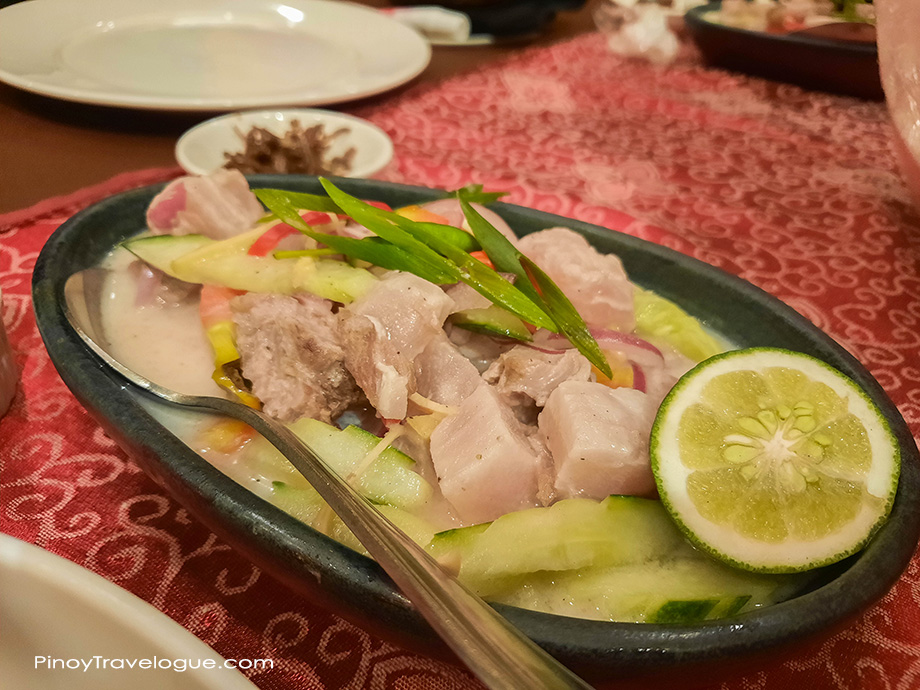 |
| Sinuglaw |
Sinuglaw mainly consists of grilled liempo and raw tuna, diced and soaked altogether in vinegar, and mixed with tabon-tabon pulp extract. Tabon-tabon, an astringent fruit that looks similar to chico and has a brain-like flesh, is native to Northern Mindanao. Its usage, usually to lessen the lansa of the raw fish, is what makes Mindanao's kinilaw distinct from other versions across the country.
Like any other kinilaw dishes, sinuglaw can be a main entrée, an appetizer or a pulutan alongside a pint of beer.
Sizzling Binaki
Binaki is Bukidnon's local kakanin, their version of Mexican tamale—a corn cake primarily made of corn dough or masa wrapped and steamed in corn husks.
The term binaki came from baki, the vernacular word for frog. The local corn cake was named as such because in the olden times, according to Sir Carl, binaki makers had to sit in a frog-like position while kneading the dough; binaki literally means "done in the manner of a frog".
 |
| Sizzling binaki |
The traditional binaki—the ones wrapped in corn husk and resembling the appearance of a suman—can be found on the streets of Bukidnon being hawked in bundles. Cucina Higala has a modern take to this dessert—it sizzles. A square binaki is topped with a large scoop of ice cream and served in a preheated cast iron plate. The server then pours caramel syrup onto it, lets it sizzle for a while, then tops it with slivered almonds. Cool it down a little and it's ready.
Cucina Higala did not topped the list of the best for no reason and even the DOT would not bring us there for nothing. When in CDO, Cucina Higala is a great place—food- and ambiance-wise—to experience Mindanao's rich culinary heritage. So how can I better end this blog than using the Visayan expression for "delicious"? Lami!
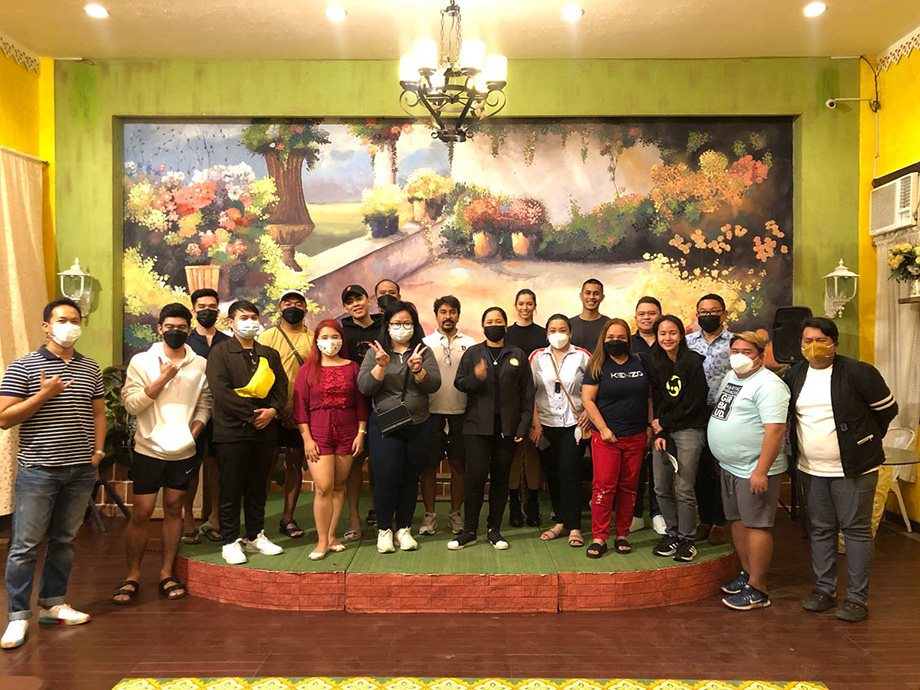 |
| With Jan Uy of Cucina Higala (leftmost) and May Unchuan, DOT Region 10 Director (middle) | via Carl Maglangit |
Cucina Higala


